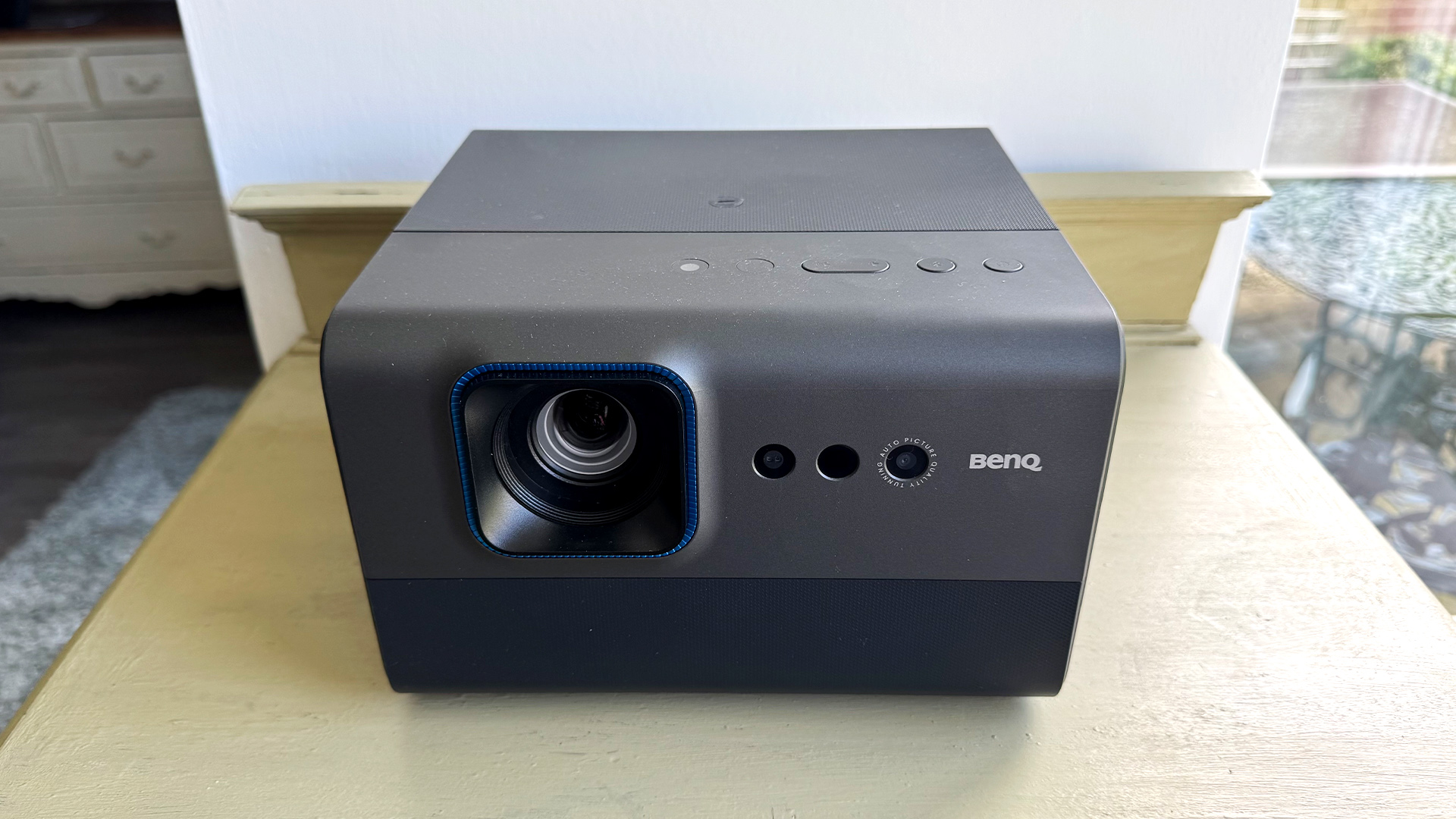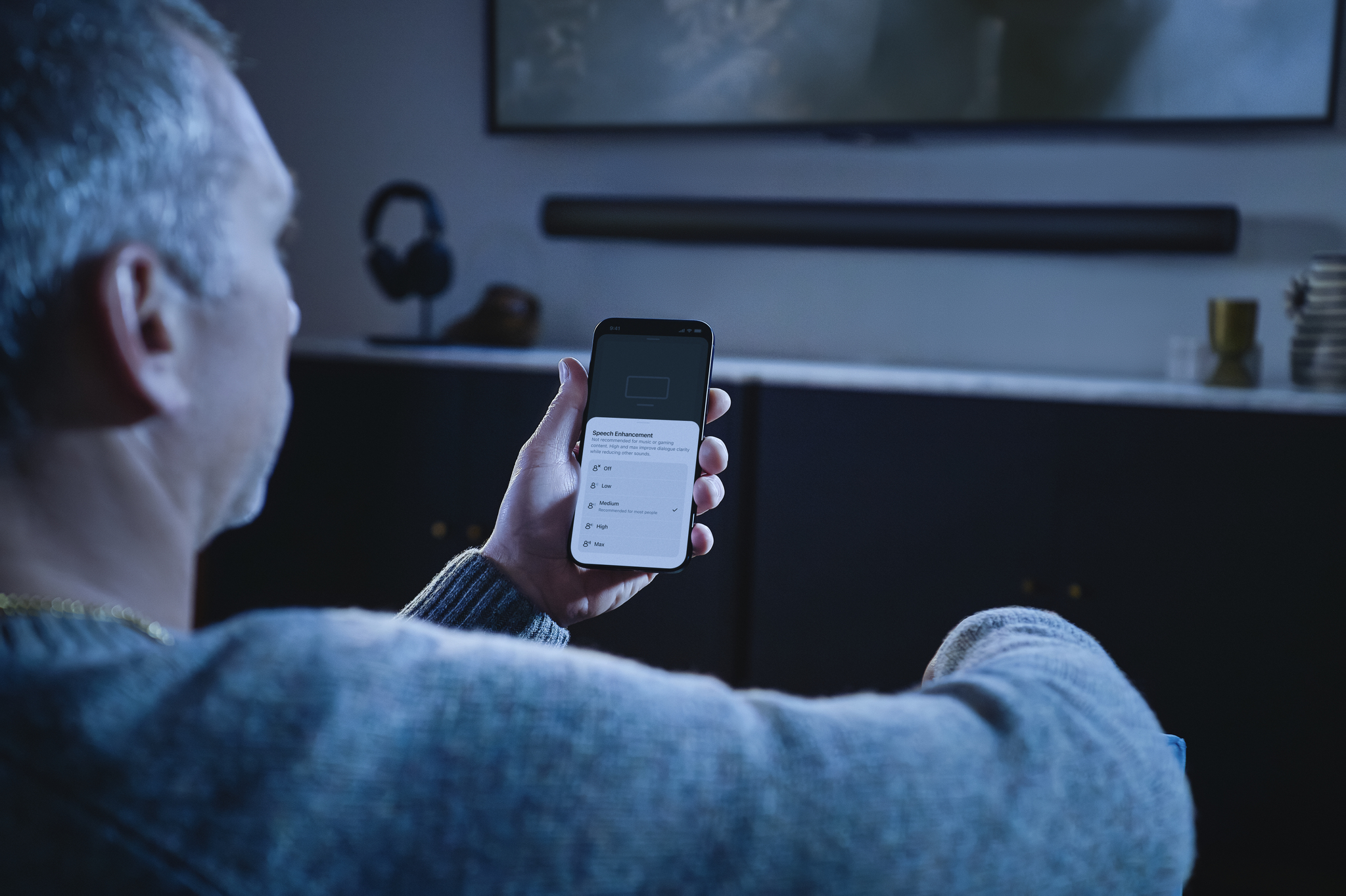What Hi-Fi? Verdict
It makes you work for it, but ultimately BenQ’s GP520 is the latest proof that it’s hip to be square
Pros
- +
Attractive coffee table-friendly design
- +
Impressively sharp, detailed 4K pictures
- +
Low lag gaming performance
Cons
- -
Best picture quality requires manual tweaks
- -
Black levels are average
- -
Minor rainbowing and ‘flashing’ interference
Why you can trust What Hi-Fi?
The GP520 is BenQ’s latest entry into a growing – and largely welcome – trend towards all-in-one home entertainment projectors that adopt roughly cubic designs so that they can include more potent integrated audio systems alongside their king-sized pictures.
It wears its square approach exceptionally well and offers an eye-catching feature set that includes 4K playback, HDR support and a Dolby Audio sound system. All for a pretty reasonable price.
Price
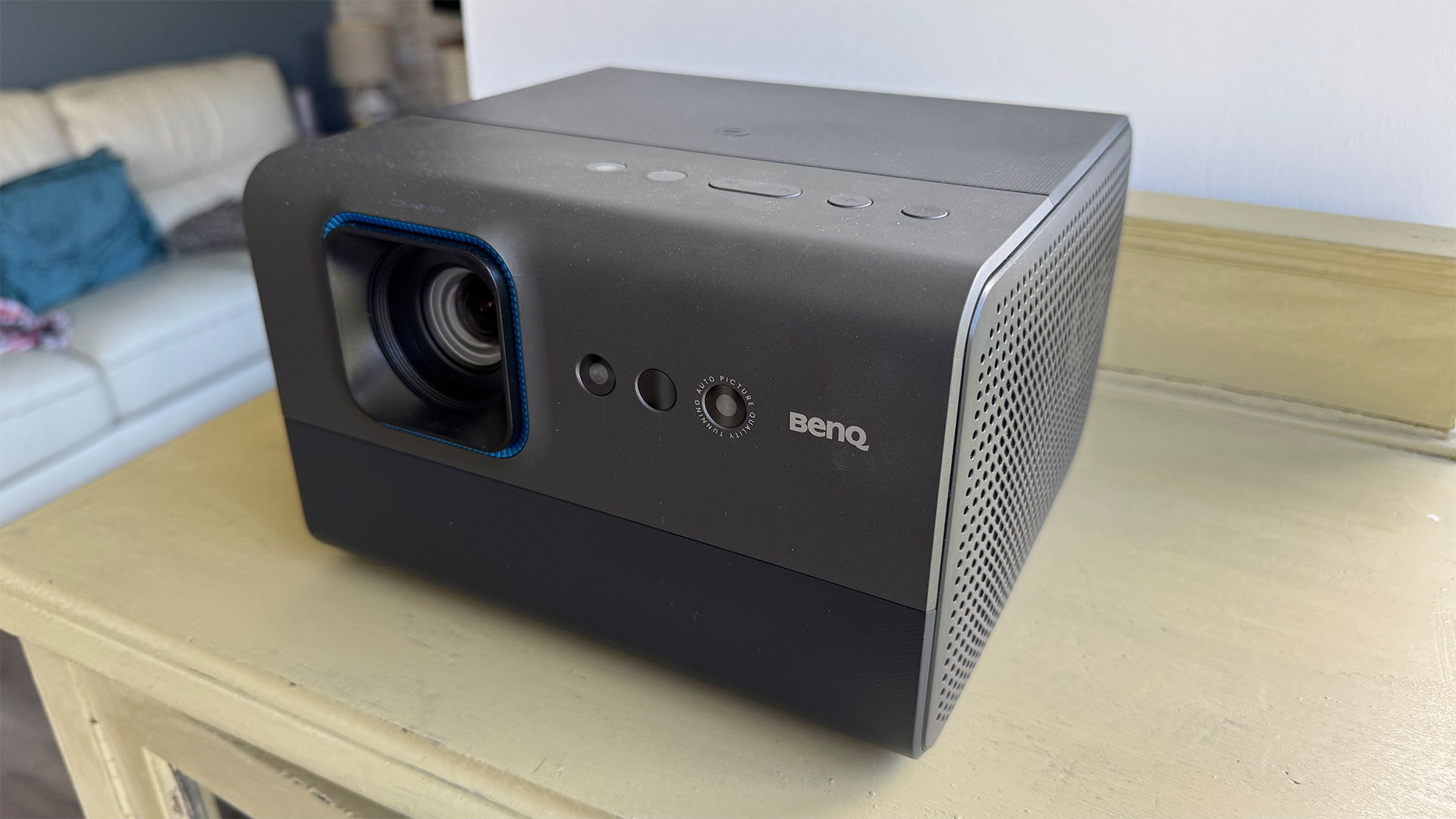
The BenQ GP520’s £1299 / $1499 / AU$2199 price is pretty much exactly where we’d expect it to be, putting the projector right in line with the similarly minded and designed Hisense C1. The GP520 price also feels appropriate when you compare its specifications and features against BenQ’s other current cubic projector hero, the excellent gaming-focused and significantly brighter X3100i.
We’d say the GP520 has enough to offer on paper for its price, including a built-in smart system, 4K HDR video playback and an unusually powerful sound system, to represent potentially good value. So long, of course, as its promising specifications translate into a strong enough performance.
Design
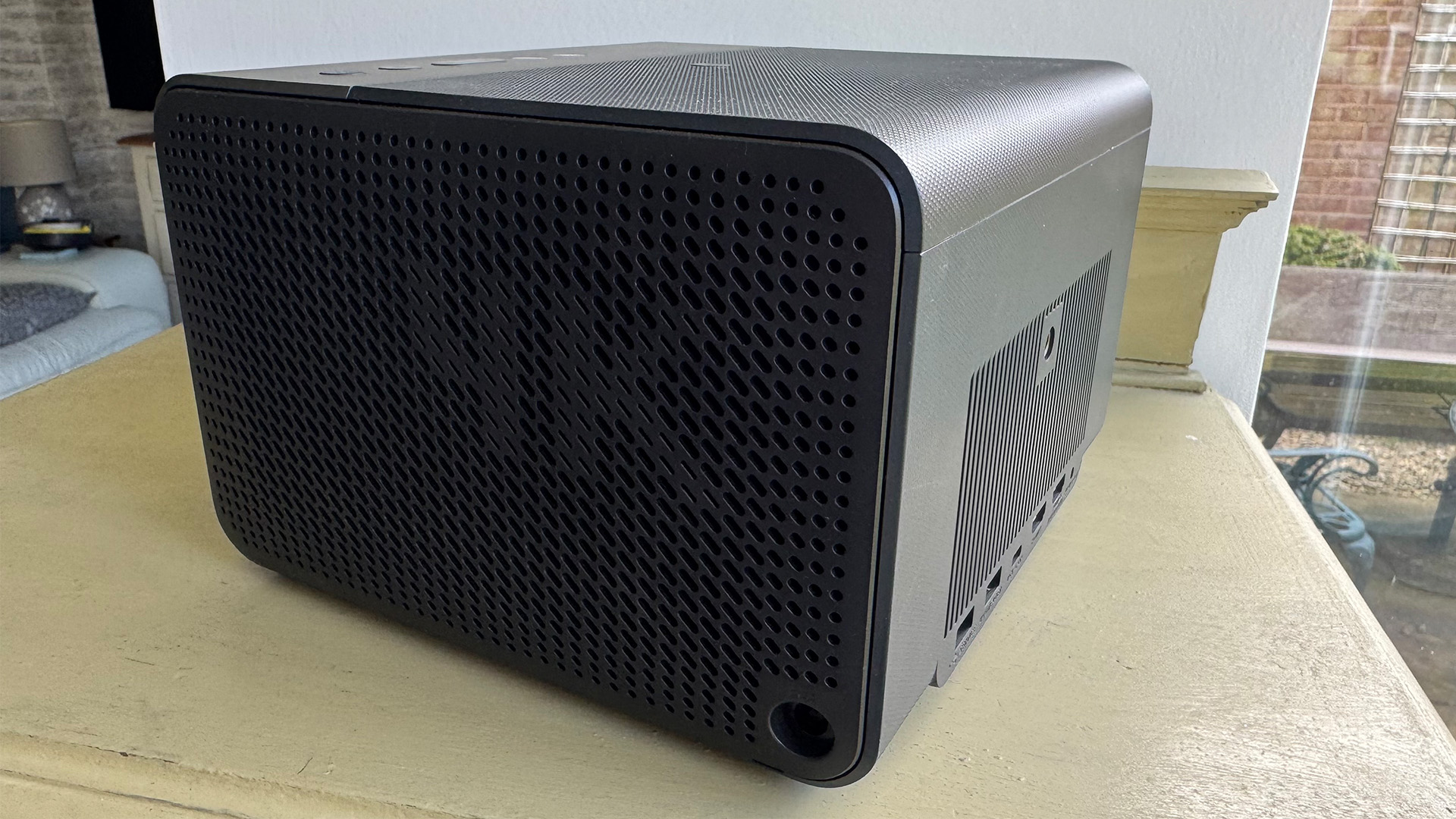
The GP520 is quite the cutie. Its (almost) cubic shape is appealing in itself, but it’s enhanced by nicely rounded front and back top edges and a fetching combination of finishes that includes a tasteful smooth blue-grey area around the lens and the buttons on the top edge, textured near-black areas over two-thirds of the top edge and the bottom third of the front edge, and an eye-catching grille over each side through which the stereo speaker system can deliver its sound.
BenQ has even gone to the trouble of designing large 4K logos into each side’s grilled finish.
The lens sits recessed into a square aperture on the projector’s front edge, alongside sensors the projector can use to automatically adjust the size, shape and focus of its images whenever it detects that the projector’s been moved.
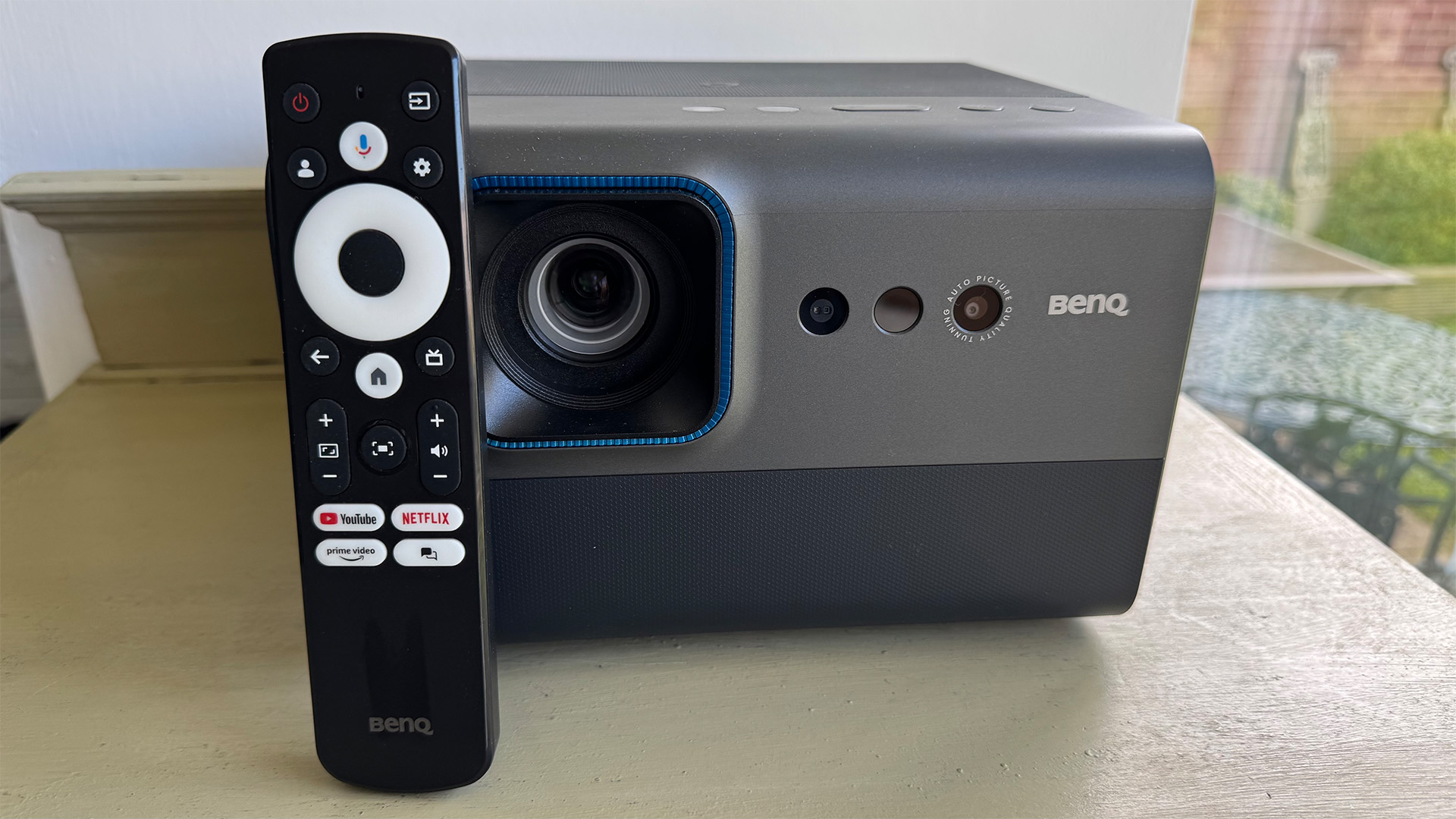
Projector type Three-laser DLP
Screen size 50 to 120 inches (claimed)
Native resolution 3840x2160 (via DLP XPR technology)
Input lag 17.9ms (60Hz)
HDR support HLG, HDR10, HDR10+
Dimensions 15 x 24 x 23cm
Weight 3.7kg
There’s a row of control buttons in the smooth grey part of the top edge, too, while connections are tucked low down on the projector’s back edge.
The back edge also carries, surprisingly, one of three mounting holes placed around the projector’s bodywork, with which it can be connected to a dedicated optional BenQ projector stand. This stand can either just give the projector a bit more placement flexibility in a regular front or side-projection placement; or it can allow the projector to be inverted for use on, say, a high shelf, or be attached to the projector’s rear to enable up-firing/ceiling projection.
The mounting points can also be used to attach the projector to a ceiling mount – though we’re not sure a relatively lifestyle projector such as this is particularly well suited to a fixed home cinema installation. Its appeal is more as a convenient projector that can be moved easily from room to room or house to house, or tucked away in a cupboard, perhaps, when you’re not using it for a movie, sports event or gaming night.
The GP520 ships with a likeable remote control that’s big enough to be findable in a dark room, helpfully features some luminous buttons, and provides instant access buttons to the projector’s YouTube, Netflix and Prime Video apps. There’s also a mic button so you can issue verbal instructions to the projector via Google Assistant, as well as a dedicated button for triggering both the projector’s automated picture set-up features and an Auto Cinema picture mode that we’ll cover more in the next section.
Features
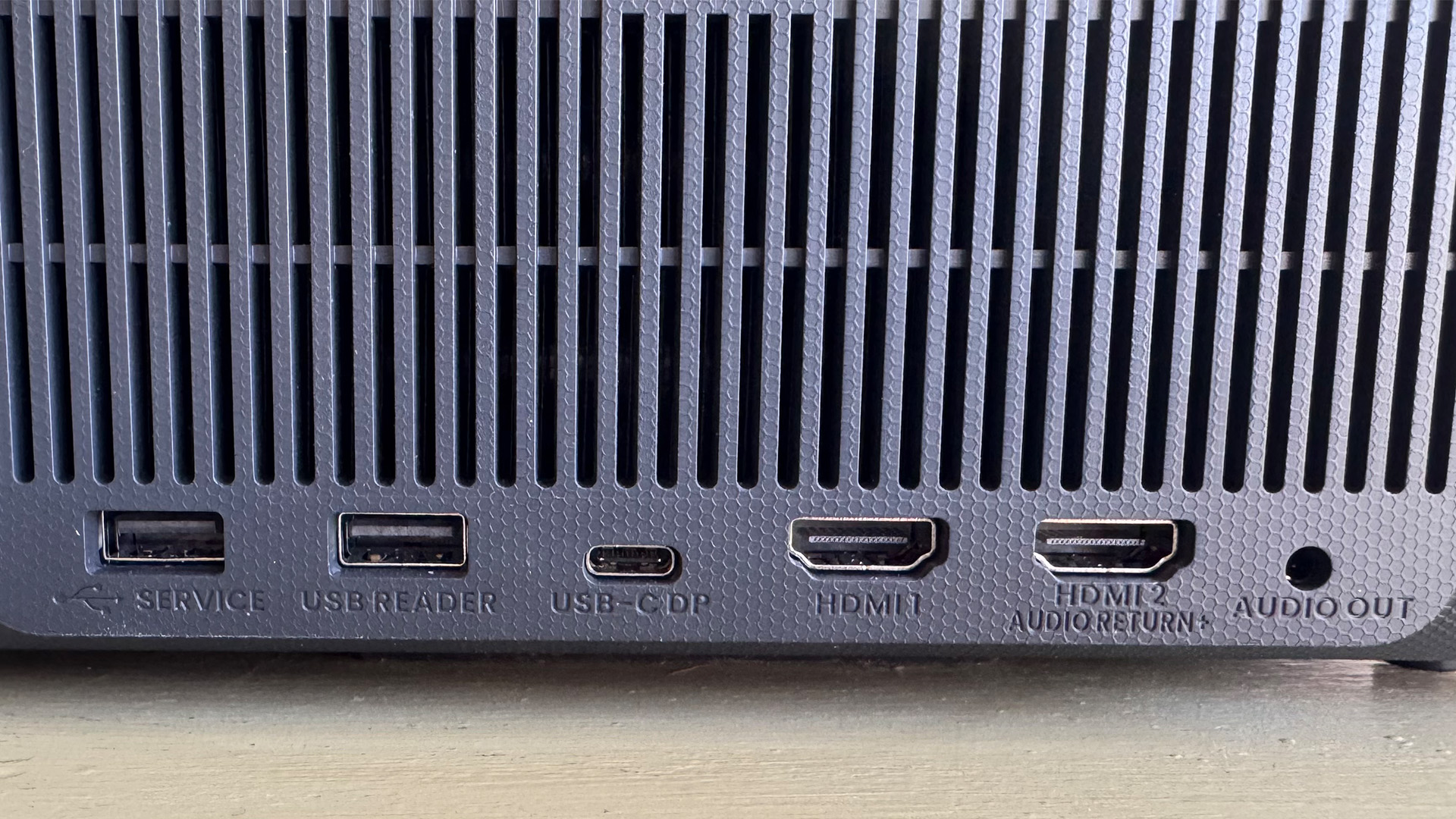
The GP520 uses a single-chip DLP lighting system claimed to deliver a maximum of 2600 lumens of brightness into 4K, HDR images. In fact, the projector’s HDR support extends to the HDR10+ system, where extra scene-by-scene picture information in a source can be used to help the projector deliver more dynamic and accurate HDR images.
The projector’s 4K support isn’t built on a native 4K resolution in the way we’d normally understand it; instead, it depends on a system called XPR that combines frame rate multiplying with image shifting to deliver a 4K outcome from a lower resolution DLP chip. This sounds like cheating, of course, but actually it’s officially recognised as a true 4K experience by the US Consumer Technology Association – and, as we’ll see, it delivers compelling results on the GP520.
The GP520 can, of course, play SDR video as well as HDR, with BenQ claiming that its projector can cover 98 per cent of the Rec 709 SDR colour spectrum. This is aided by a combination of precise light control, waveform analysis and factory calibration as part of what BenQ dubs a CinematicColour system.
The GP520’s promising picture features are supported by a 2 x 12W speaker set-up with Dolby Atmos support. This is much more on-paper power than most built-in projector sound systems provide, and the large grilled sides provide far more egress for the sound than you get with the vast majority of projectors, too.
BenQ has equipped the GP520 with a built-in Google TV smart system. Most other living room projectors these days also carry Android TV or Google TV smarts, but the GP520 manages a better implementation of it than many rivals do. Its version didn’t crash often at all during our tests and, more importantly, it supports properly nativised versions of most of the main video streaming services. So for the most part, if a streaming service supports HDR and/or 4K playback, the GP520 will be detected as being able to play it.
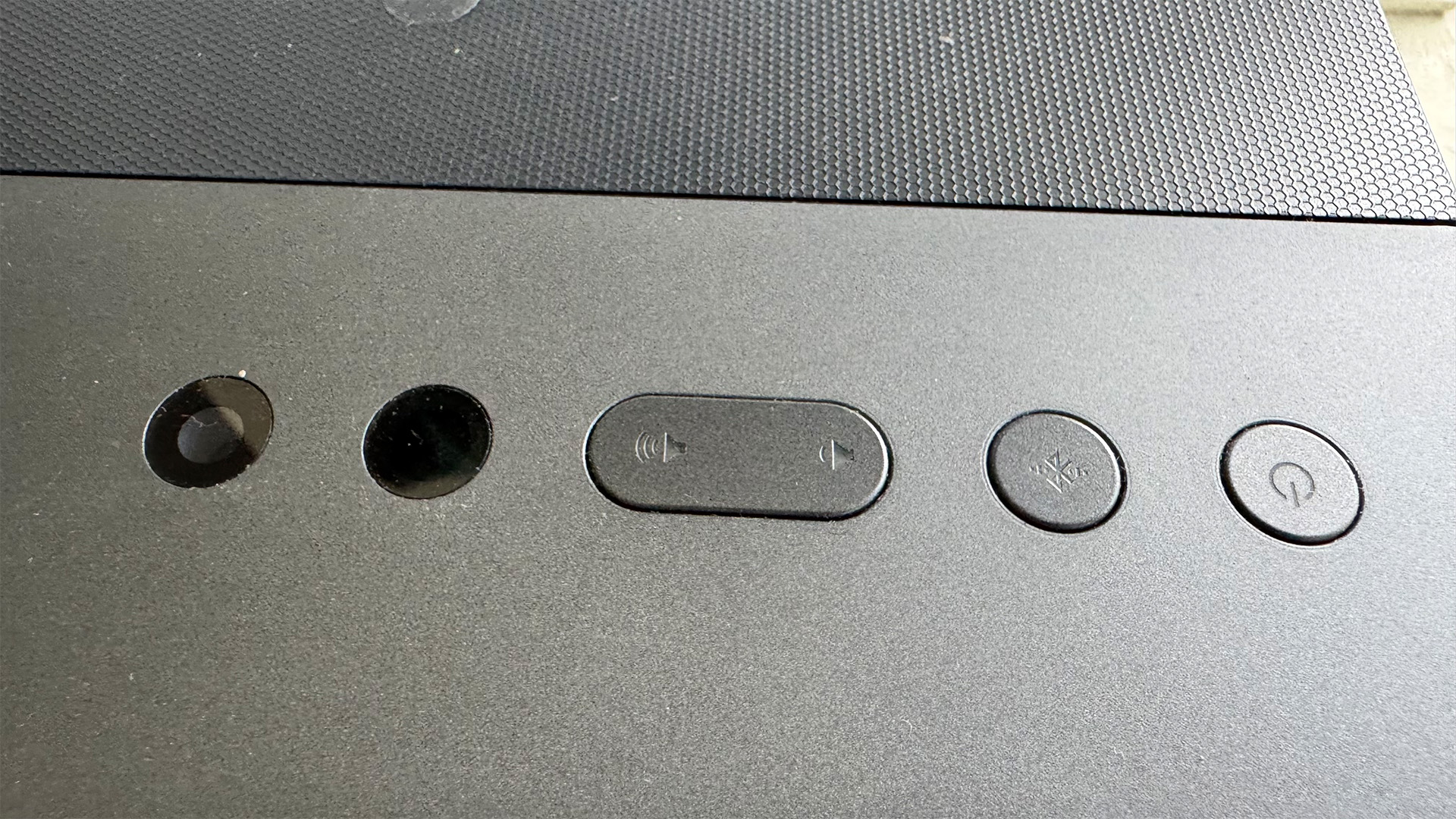
As usual, using Google TV does mean the GP520 doesn’t carry every UK terrestrial broadcaster's catch-up app. There’s no BBC iPlayer or Freeview Play, for instance. Unlike some Google TV platforms out there, though, the GP520 does at least carry a working ITVX app, as well as the My5 and All 4 catch-up services.
If you want to feed the GP520 an external source, its connections include two HDMIs, two Type-A USBs (one for service use, one for reading files from USB storage drives), one Type-C USB port for playing files off a USB flash driver or delivering power to a USB-C device, and a 3.5mm audio output. Plus, of course, there’s built-in wi-fi and Bluetooth 5.2 wireless support.
Unlike its more expensive X3100i sibling, the GP520 is not designed specifically with gaming in mind, so you don’t get relatively high-end gaming features such as 120Hz support or VRR. It does still support ALLM switching with compatible game sources, though, as well as gaming up to 4K/60Hz. Plus it gets input lag down to an impressively low 17.9ms if you set it to its Game picture preset and additionally activate a Game Boost mode. This Game Boost mode deactivates some of the picture’s auto set-up features, but for many room layouts, this won’t be a big problem. If you really do need the projector’s Auto-set features while gaming, the basic Game mode lag is still a respectably low 34.6ms without Game Boost in play.
Last but by no means least on the BenQ GP520’s pretty extensive feature list is its comprehensive automatic picture set-up system. As part of that Auto Cinema Mode we mentioned earlier, the projector can take care of adapting the shape and focus of its images automatically, as well as optimising them to your wall colour and ambient light levels in your room. The image geometry part of this system doesn’t always get things quite right, but fixing this manually isn’t particularly onerous.
Picture
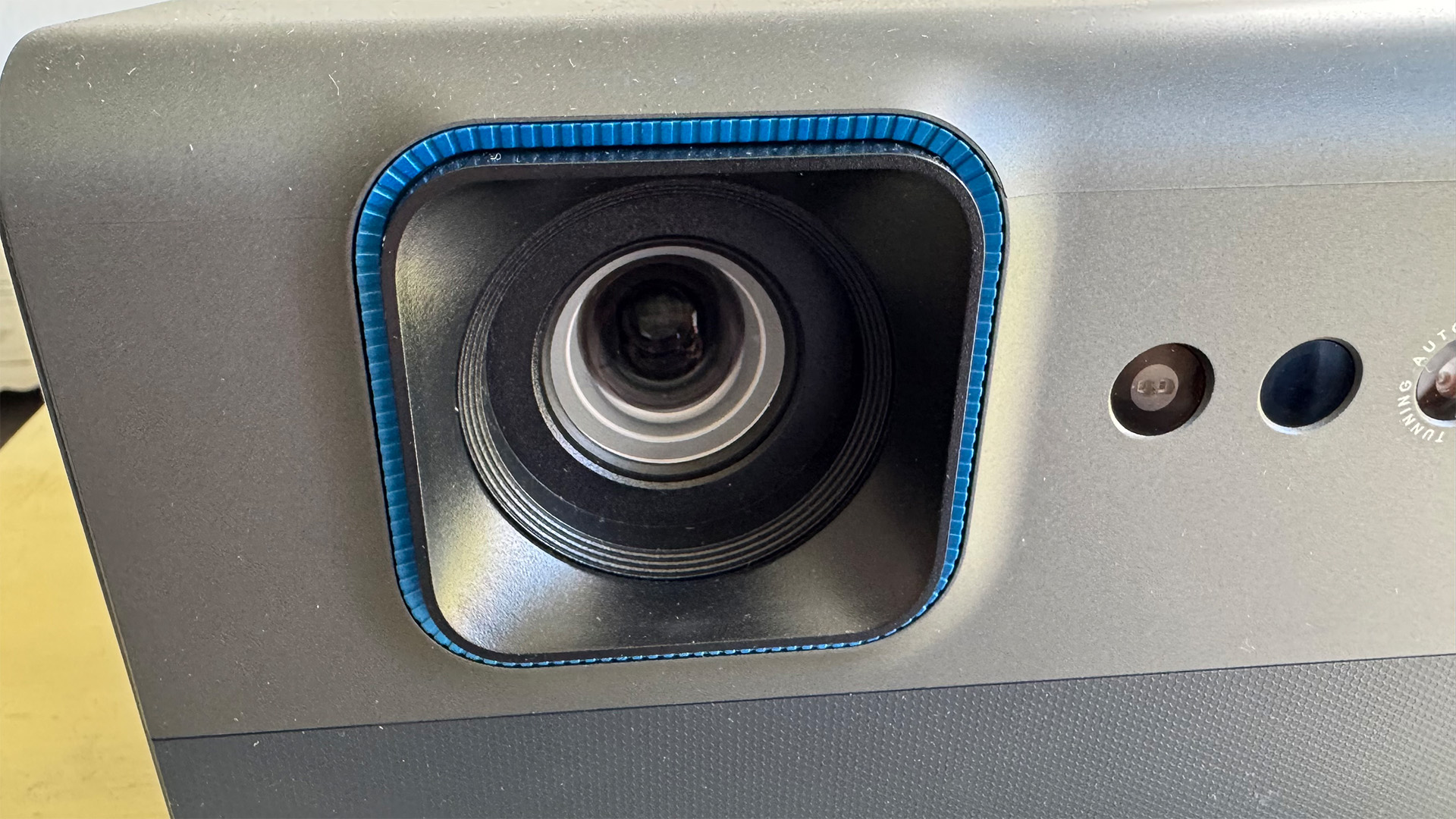
The GP520 can deliver really engaging pictures – once you’ve sorted out a couple of out-of-the-box issues.
Particularly impressive is how sharp and detailed its pictures are. Native 4K sources actually look 4K – and there’s nothing processed or forced-looking about this sharpness, either. It looks natural and clean and is remarkably unaffected by pushing the GP520’s pictures to serious sizes. We found we could get a picture of as much as 120 inches out of it before it started to look a little duller than we felt comfortable with.
The innate sharpness of the GP520’s DLP projector system holds good with streamed footage, too. The softness and noise we often see when streaming video into projectors using their own onboard smart systems just isn’t there.
The extreme clarity of the GP520’s pictures holds up surprisingly well with HD sources too, and is handily backed up by some outstandingly subtle colour reproduction. Even the most vibrant areas look three-dimensional and nuanced, with no cartoonish flatness or major signs of colour banding or patchiness, while tricky skin tones appear without any tell-tale signs of blotching or striping. Skin tones also look quite natural in hue – provided you’re using either the projector’s Cinema preset or a tweaked version of the HDR User preset, which do away with a slightly jaundiced or peaky look you get with the other presets.
The GP520 is bright enough to deliver watchable images even in quite bright rooms (especially with the Auto Cinema mode engaged) and also generate a decently satisfying HDR effect. There’s more brightness, in both small peak bright areas and full-screen bright shots, than there is with SDR, and this brightness feeds into a fuller-looking colour range with HDR than SDR.
While not expressly designed for gaming, the GP520’s sharpness, brightness, responsiveness and punchy colours deliver an enjoyable gaming experience if you can manage without the 120Hz fluidity and extra brightness some other projectors can give you these days.
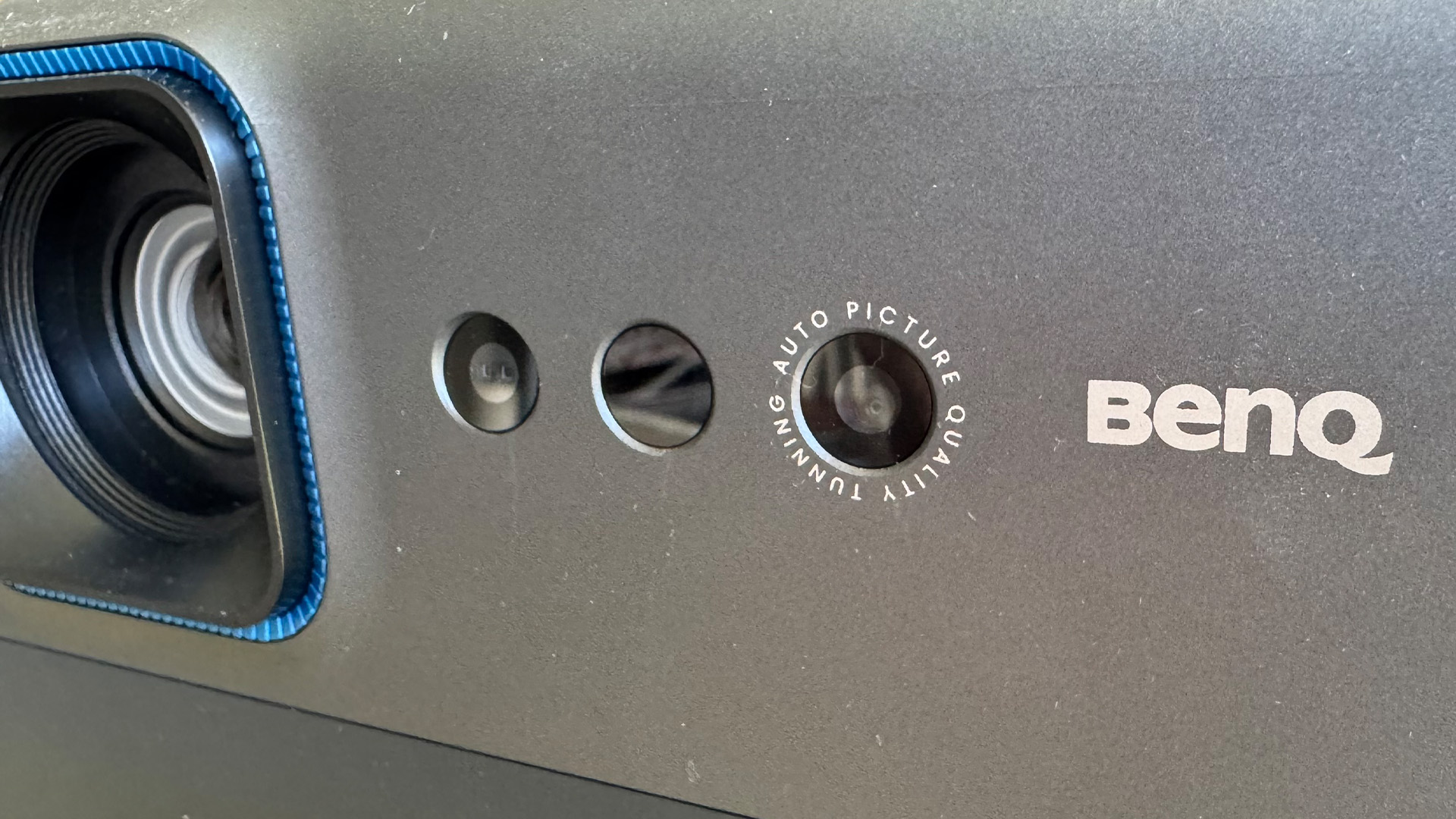
A little cluster of issues stops the GP520’s pictures from making the leap from good to great. First, we sometimes spotted DLP projectors’ rainbow effect, where stripes of red, green and blue can flit momentarily over bright parts of the picture. Second, we sometimes noticed a very short flash effect during sharp cuts between very dark and very bright shots.
Next, its delivery of dark scenes is only solid. While SDR footage looks quite consistent and natural with dark scenes, HDR shots that contain a mix of bright and dark footage can start to look rather greyed over. This greyness isn’t severe enough, though, to cause too much colour shift in dark areas, and enough shadow detail remains visible through the greyness to stop images from feeling flat or hollow.
The final problem is that you need to be careful with a few of the projector’s settings to get the best out of it. The MEMC motion processing, for instance, tends to make 24p films look too smooth and generates a few distracting artefacts. So we’d suggest turning it off. You should also turn off all noise reduction, at least with 4K and good quality HD sources, to keep the image looking sharp; and set the Adaptive Luma Control to low and the unusual Local Contrast setting to medium to limit some floating brightness instability that can otherwise creep into HDR playback.
None of these recommended tweaks is hard to do, though. So there’s nothing really major for even the most technophobic of our readers to have to worry about.
Sound
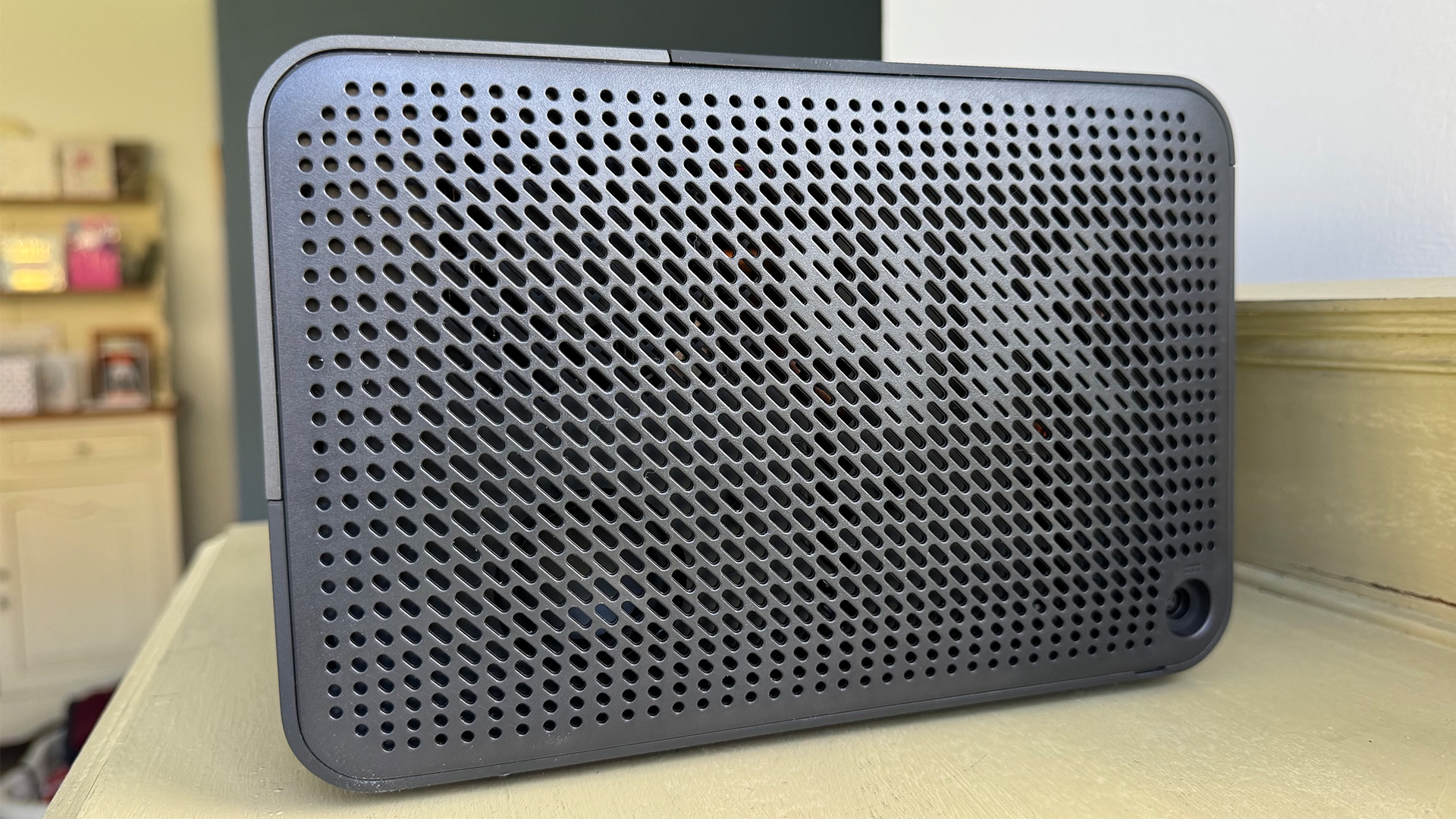
The GP520’s audio isn’t quite as potent as the size of both the projector’s bodywork and the speaker grilles down each side had us hoping for – but it’s still a handy cut above the built-in sound systems of most projectors.
Particularly pleasing is how full-blooded and rounded its sound is, thanks to the presence of way more low-frequency sound than most projectors serve up. This provides enough ballast to a movie soundtrack to stop it from sounding thin or weightless, while at the other end of the spectrum high trebles and spot effects don’t sound shrill or harsh. Impact sounds have a suitably punchy edge to them, too, without sounding sibilant.
The bass doesn’t sound boomy or boxed in either, and actually spreads quite some distance from the projector’s body. In fact, contrary to usual projector sound expectations, the more bass a scene contains, the more effective and convincing the GP520 sounds.
The speakers are sensitive enough to reproduce even very subtle details without exaggerating or misplacing them, too, which helps make film and game worlds feel immersively busy and ‘lived in’. Especially as the staging of these details extends, like the bass, beyond the projector’s physical confines. So much so that the projector even delivers a mild sense of the three-dimensional soundstage associated with Dolby Atmos soundtracks.
Dialogue always sounds clean and convincing as well as remaining locked at the heart of the soundstage, and the speakers don’t succumb to distortions such as crackling or 'phutting', even when a film soundtrack really piles on the pressure. And there’s enough headroom in the GP520’s speakers to ensure it’s able to expand its sound as action scenes grow towards their climax.
In an ideal world, the GP520 would have more raw power to play with, to help it deliver more cinematic volume levels and push the soundstage even further into your room. Though on balance, we’d always rather a projector or TV sound system operate within its limits, as the GP520 does, rather than push things so hard the speakers start to distort.
Verdict
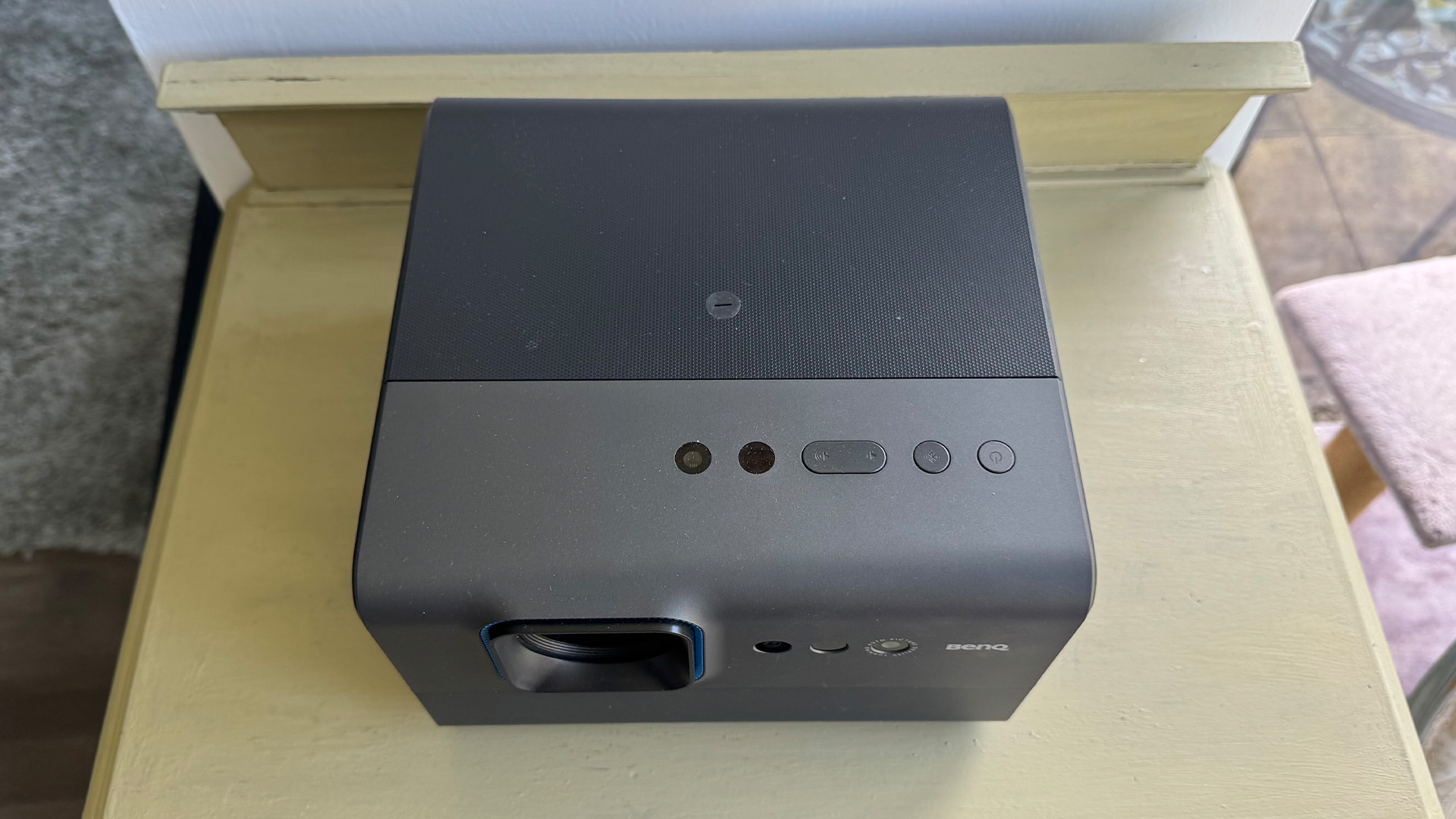
The BenQ GP520 is a fun alternative to the current trend for ultra-portable projectors, giving you much of the convenience of those pint-sized models, including a cute design, alongside substantially more flexible and engaging picture and sound quality.
SCORES
- Picture 4
- Sound 4
- Features 4
MORE:
Read our review of the Hisense C1
Also consider the Xgimi Horizon Ultra
Read our Epson EF-22 review
John Archer has written about TVs, projectors and other AV gear for, terrifyingly, nearly 30 years. Having started out with a brief but fun stint at Amiga Action magazine and then another brief, rather less fun stint working for Hansard in the Houses Of Parliament, he finally got into writing about AV kit properly at What Video and Home Cinema Choice magazines, eventually becoming Deputy Editor at the latter, before going freelance. As a freelancer John has covered AV technology for just about every tech magazine and website going, including Forbes, T3, TechRadar and Trusted Reviews. When not testing AV gear, John can usually be found gaming far more than is healthy for a middle-aged man, or at the gym trying and failing to make up for the amount of time he spends staring at screens.
You must confirm your public display name before commenting
Please logout and then login again, you will then be prompted to enter your display name.
